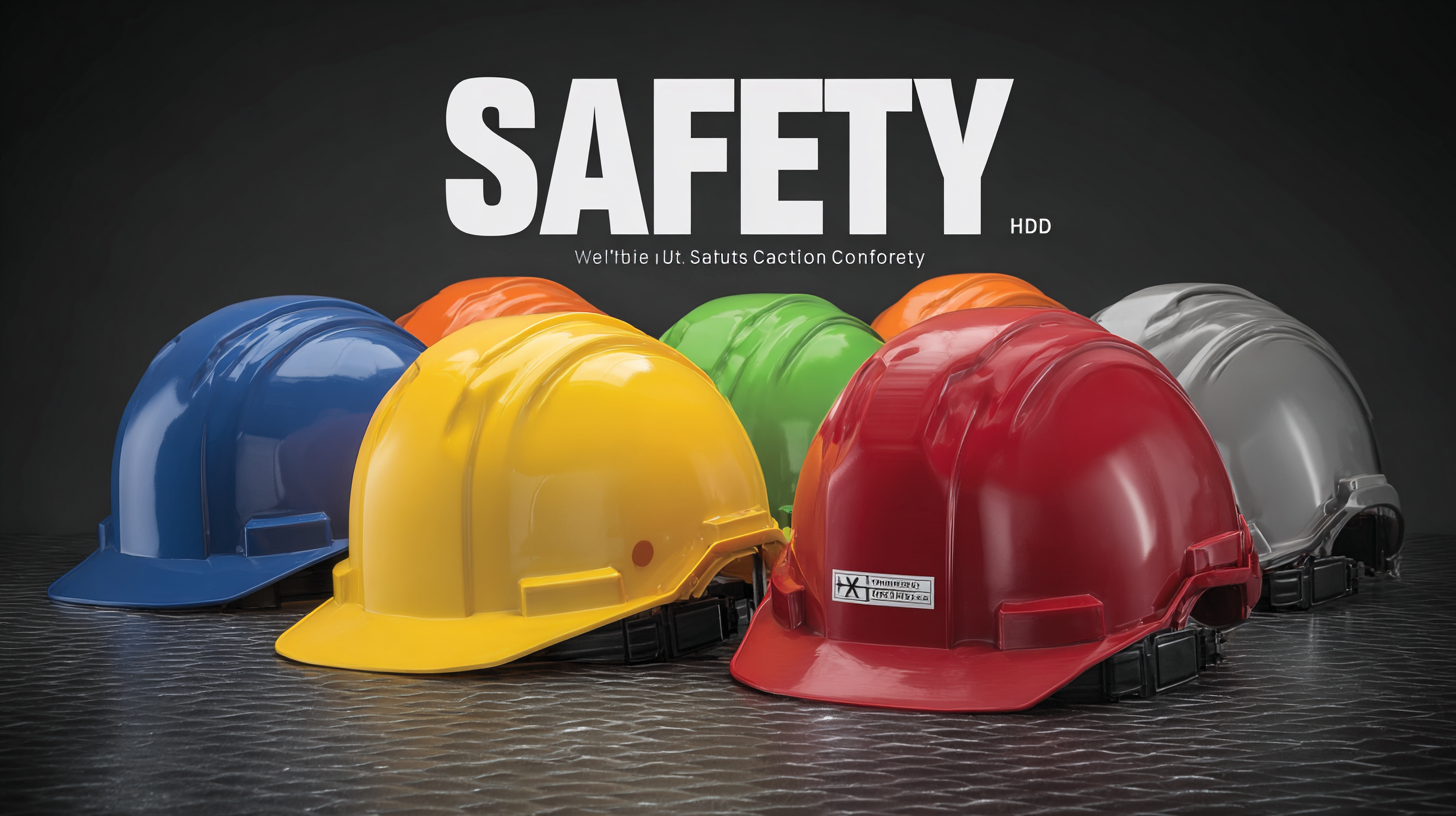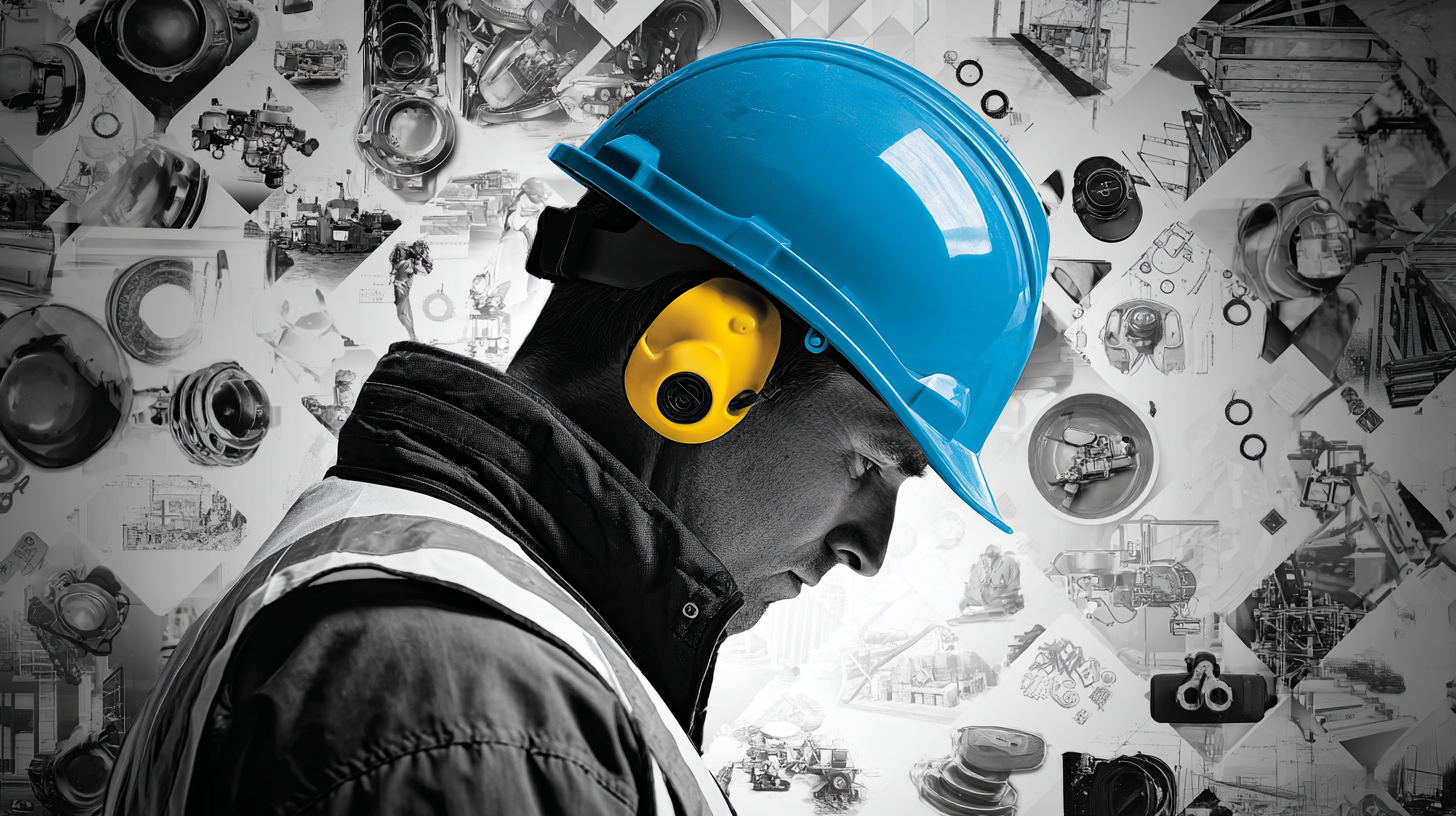Ultimate Guide to Selecting the Best Hard Hat for Maximum Safety and Comfort
When it comes to workplace safety, selecting the right Hard Hat is paramount for ensuring maximum protection and comfort. In this ultimate guide, we will delve into the critical technical specifications of Hard Hats that every safety-conscious worker should know. From the materials used in construction to the variations in design and functionality, understanding these details will empower you to make an informed choice. Additionally, we will outline essential how-to tips for selecting a Hard Hat that not only meets industry standards but also accommodates your unique work environment and personal preferences. Whether you're in construction, manufacturing, or any other field where head protection is essential, this guide will serve as your comprehensive resource for navigating the options available and enhancing your safety on the job.
Factors to Consider When Choosing the Right Hard Hat for Your Needs
When selecting the right hard hat, several key factors come into play to ensure maximum safety and comfort. Firstly, consider the type of work you’ll be doing. Different industries require varying levels of protection, so it’s essential to choose a hard hat that meets the necessary safety standards for your specific environment. For instance, construction sites may require helmets that can withstand impact and penetration, while electrical work calls for non-conductive materials.
Another critical factor is the fit and adjustability of the hard hat. An ill-fitting helmet can be both uncomfortable and unsafe, so look for models with adjustable suspension systems to achieve a snug fit. Additionally, consider the weight of the helmet; lighter options can significantly enhance comfort during long hours on the job.
Tip: Look for hard hats with sweatbands or ventilation features to increase airflow, preventing discomfort from heat buildup.
Tip: Don’t forget about accessories such as face shields and hearing protection that are compatible with your hard hat. These additions can provide an extra layer of safety without compromising your comfort.
Top Hard Hat Features That Enhance Safety and Comfort in the Workplace
When it comes to workplace safety, the hard hat is an essential piece of protective equipment, and selecting the right one enhances both safety and comfort. According to the American National Standards Institute (ANSI), over 100,000 workplace concussions occur annually due to head injuries, highlighting the critical importance of a properly designed hard hat. Modern hard hats come with features such as adjustable suspension systems and moisture-wicking liners, which not only improve fit but also enhance comfort, allowing workers to wear them for longer periods without fatigue.
Moreover, additional features such as integrated ventilation systems and reflective strips are increasingly becoming standard in high-quality hard hats. A report from the Occupational Safety and Health Administration (OSHA) indicates that wearing hard hats with ventilation can lower the risk of heat stress by up to 30% in hot environments. Furthermore, the inclusion of accessories like face shields, earmuffs, and chin straps can significantly improve overall safety, providing comprehensive protection against various hazards. Investing in a hard hat with these advanced features not only complies with safety regulations but also fosters a culture of safety and well-being in the workplace.
Ultimate Guide to Hard Hat Features Affecting Safety and Comfort
Expert Tips for Fitting and Adjusting Your Hard Hat for Optimal Protection
Fitting and adjusting a hard hat properly is crucial for maximizing both safety and comfort in hazardous work environments. According to the Occupational Safety and Health Administration (OSHA), approximately 2,300 head injuries occur each year in construction sites alone, underscoring the importance of selecting a hard hat that fits accurately. A well-fitted hard hat not only protects against falling objects but also reduces the risk of neck strain caused by poorly distributed weight. It is recommended that hard hats should be adjusted to ensure a snug fit atop the head with a clearance of 1-2 inches above the top of the head for effective shock absorption.
To achieve optimal protection, it's essential to adjust the suspension system correctly. Most modern hard hats come with an adjustable suspension that can cater to head sizes ranging from 6 ½ to 8 inches. According to a report by the National Institute for Occupational Safety and Health (NIOSH), improperly fitted personal protective equipment can diminish protective qualities by up to 50%. Therefore, ensuring the headband rests comfortably around the forehead and the back straps are tightened can significantly improve stability during movement. Regularly inspecting the hard hat for wear and ensuring the padding is clean and intact contributes to overall comfort and effectiveness, which is critical for those who are on-site for extended periods.

Comparison of Popular Hard Hat Types: Which One Is Right for You?
When selecting the right hard hat, understanding the variety of types available is crucial to ensuring safety and comfort. There are primarily two categories of hard hats: Type I and Type II. Type I hard hats are designed to provide protection mainly from impacts to the top of the head, making them suitable for construction environments. Conversely, Type II hard hats offer additional lateral protection, ideal for industries with risk from sides and top impacts, such as electrical work. According to a report by the National Institute for Occupational Safety and Health (NIOSH), proper selection of protective gear, including hard hats, can reduce injury rates by up to 40%.

Another key factor to consider is the material of the hard hat; common materials include polyethylene and fiberglass. Polyethylene is lightweight and affordable but may not offer the durability of fiberglass. A study by the American National Standards Institute (ANSI) indicates that fiberglass hard hats, while more costly, can withstand higher temperatures and are more resilient against impacts. Furthermore, comfort features such as adjustable suspension systems and moisture-wicking liners can significantly enhance the wearer's experience, promoting longer use without discomfort. Ultimately, the right hard hat combines safety standards with personal comfort preferences, ensuring optimal protection in any work setting.
Maintenance Best Practices to Extend the Life of Your Hard Hat
To ensure the longevity and effectiveness of hard hats, proper maintenance is paramount. According to the American National Standards Institute (ANSI), hard hats should be replaced every 2 to 5 years, depending on their exposure to impacts and environmental factors. Regularly inspecting your hard hat for cracks, dents, or any signs of degradation is essential. In fact, studies show that nearly 50% of hard hat failures are linked to lack of maintenance. Ensuring that your hard hat remains in good condition not only protects the user but also contributes to overall workplace safety.
In addition to routine inspections, it is crucial to store hard hats correctly. The U.S. Occupational Safety and Health Administration (OSHA) recommends that hard hats be kept in a cool, dry place away from direct sunlight when not in use. Prolonged exposure to UV light can significantly reduce the material integrity of the hard hat, with some reports indicating a reduction in strength by up to 50%. Cleaning your hard hat with mild soap and water, while avoiding harsh chemicals, can further extend its life, ensuring that workers stay protected against potential impacts and hazards on the job site.





